|
| |
| |
| |
Early Belgian books in the Rosenwald Collection of the Library of Congress
by Frederick R. Goff
Chief of the Rare Books Division, Library of Congress
During March of 1943 Mr. Lessing J. Rosenwald of Jenkintown, Pennsylvania, presented his distinguished collection of books to the Library of Congress. The majority of the volumes were published prior to 1600 and for the most part are illustrated with woodcuts or engravings. As a collection they constitute an impressive group of the most important illustrated books of the fifteenth and sixteenth centuries. The books representation of these centuries is small, numbering in all 588 volumes, of which 318 are incunabula. The simple numerical count, however, in no way reflects either the richness of the contents or the discriminating taste of the collector who continues to add to his library at a pace which for these days must be regarded as little less than phenomenal. Each volume has been selected with the greatest care for its appropriateness, for its textual content, for its condition, for its binding, or for other qualifications. Through this gift the Rare Books Division of the Library of Congress has acquired new prestige in fields of book collecting which have always appealed to collectors and which provide provocative and varied subjects of investigation for the interested scholar.
In recent Library reports and particularly in The Library of Congress Quarterly Journal a large part of the collection has been described in detail. We should therefore like to take advantage
| |
| |
of this occasion to describe briefly the several Belgian incunabula and imprints of the first half of the sixteenth century which are contained in this collection before describing at greater length a charming and most uncommon Belgian book, entitled Een profitelijcke oefeninghe van dē .xv. bloetstortinghē Ihesu cristi, which Adriaen van Berghen printed at Antwerp about the year 1515.
The earliest Belgian volume in the collection is a copy of the Fasciculus temporum of Werner Rolewinck, which Jan Veldener, the first printer to establish his press at Louvain, published in 1475. The date 1476 actually appears in the colophon, i.e. ‘M.cccc.lxxvi. qr̄to kalēdas ianuarias scdm stiluz romane curie...’, but as it was the custom of the Roman Curia to begin the year on December 25, the correct date for this edition is December 29, 1475. This then is in all probability the third recorded edition of this typographically interesting and popular fifteenth century chronicle of which more than thirty editions are recorded. From the point of view of illustration, the many woodcuts are regarded as the earliest series of woodcuts to appear in a Netherlandish book. In subject matter these wood engravings closely follow the pattern set by the earlier Cologne edition printed by Arnold Ther Hoernen in 1474.
The large initial letters found in the volume were later used in Petrus de Rivo's Opus responsivum ad epistolam apologeticam Pauli de Middleburgo, de anno, die et feria dominicae passionis, the most ambitious of the three books printed at Louvain by Ludovicus Ravescot, all of which are without a date. However, the prologue by the author, professor of theology at the University of Louvain, states that the work was edited at the University of Louvain in the year 1488. Since the volume itself was printed ‘In alma universitate Louaniensi’, it seems very likely that the book was printed either in 1488 or shortly thereafter. The American Incunabula Census of 1940 locates only the copy owned by the Pierpont Morgan Library in New York; M.-Louis Polain in his Catalogue des livres imprimés au quinzième siècle des bibliothèques de Belgique (no. 3126) locates copies in the Bibliothèque Royale and the Plantin-Moretus Museum.
This very uncommon book is illustrated with three large and
| |
| |
exceptional woodcuts representing the Last Supper, the Crucifixion and the Resurrection.
A reproduction of this last cut is found on page 107 of volume III of the Catalogue of manuscripts and early printed books from the libraries of William Morris, Richard Bennett... now forming portion of the library of J. Pierpont Morgan (London, 1907). A smaller cut of much charm appears on the title page; it shows either the author or printer kneeling before the Madonna, who is standing before a screen in a Gothic building. In the spandrils of the arch are the arms of Louvain and of the printer. Reproductions of this cut are found on page 106 of volume III of the J. Pierpont Morgan Catalogue cited above; on plate 91 of Jan Willem Holtrop's Monuments typographiques des Pays-Bas... (La Haye, 1868); on page 593 of Arthur M. Hind's An introduction to a history of woodcut (London, 1935); and incorrectly as a printer's device on page 50 in Rudolf Juchoff's Drucker- und Verlegerzeichen... (München, 1927). These illustrations apparently first received attention in Jules Renouvier's Histoire de l'origine et des progrès de la gravure dans les Pays-Bas et en Allemagne (Bruxelles, 1860), who considered them the most remarkable woodcuts produced at Louvain ‘sinon par la taille, qui est assez grosse, du moins par le dessin et l'expression, qui ne peuvent venir que d'une école vaillante.’ For a further discussion of these cuts the interested reader is referred to section 23, The Second Louvain Woodcutter (about 1487-1496), in William M. Conway's The woodcutters of the Netherlands in the fifteenth century (Cambridge, 1884).
Another Louvain imprint is the profusely illustrated edition of Boccaccio's De claris mulieribus, which was printed by Egidius van der Heerstraten in 1487. Of the eight illustrated editions of Boccaccio's work recorded by the Gesamtkatalog der Wiegendrucke, the Rosenwald Collection contains five distinct editions and duplicate copies of two of these. The present edition, the third Latin edition, contains seventy odd woodcuts freely adapted from those found in the first edition which appeared at Ulm in 1473. Although some of these, especially the cut of Adam and Eve with figures representing the capital sins appearing as fruit amidst the foliage of the Tree of Knowledge (Reproduced
| |
| |
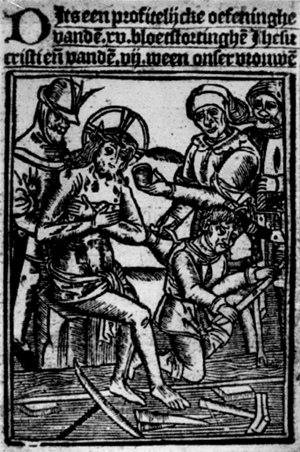
I
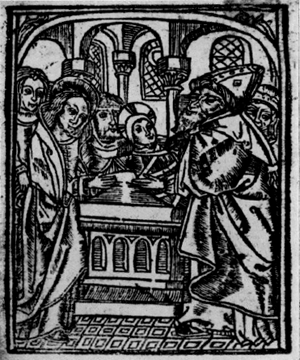
II
| |
| |
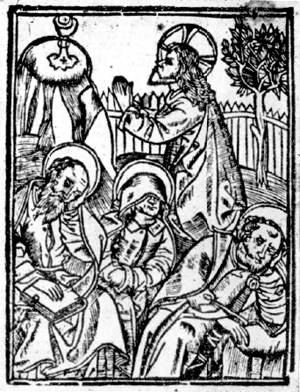
III

IV
| |
| |
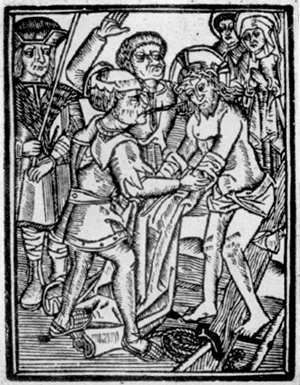
V
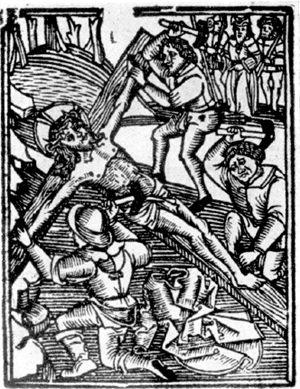
VI
| |
| |

VII
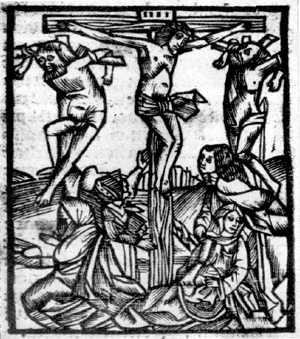
VIII
| |
| |
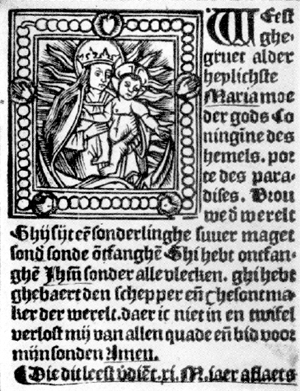
IX
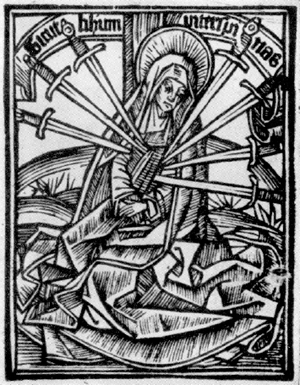
X
| |
| |
in Holtrop, op. cit., pl. 94 and in J. Pierpont Morgan Catalogue, Vol. III, p. 104), are as good and as spirited as the originals, they are for the most part inferior to the work of the artist at Ulm. Mr. Conway, who considers them to be the work of The Brussels Woodcutter (1484-1486), has described the Adam and Eve cut rather succinctly in the following terms (p. 129):
‘Indeed in the whole range of the woodcuts in the early printed books of the Low Countries, this is almost the only one to which I can point, where the artist seems to have been at all a thinking man - a man who really had something to say, however little, and who therefore took pains to say it in the best and clearest way he could. For there is here no manner of hurry, every stroke is deliberate, quiet, simple, devoid alike of thoughtless impatience and of rude boldness or dash. There is no crowding, line is laid by line without crossing or interference, and therefore with entirely good effect. The vital error of the whole is that the working is in lines at all, the artist having thought in pen and paper, not in knife and wood.’
Passing from Louvain to Antwerp, we are now concerned with several unusual books which were printed there. The earliest of the Antwerp imprints in the Rosenwald Collection is a Flemish translation of Ludolphus de Saxonia's Meditationes vitae Christi, entitled Tboeck vanden leuen ons heeren jhesu christi, and printed by Gerard Leeu in 1487. The nearly one hundred and fifty cuts in the volume are regarded as ‘amongst the worst productions of a bad period’; yet they nonetheless occupy a chapter albeit a somewhat uninspired one in the early history of Belgian book illustration.
The next year the same printer published an interesting miniature volume containing the Meditationes in Flemish of Jordanus de Quedlinburg. Measuring only 99 by 71 millimeters, it contains 75 distinct colored woodcuts. It is a most uncommon book, no other copies being represented in American ownership; Polain locates but the one copy in Antwerp, and few others are known. The copy in the Rosenwald Collection, formerly in the library of C.W. Dyson Perrins, is bound with another Antwerp imprint, the Rosarium beatae mariae virginis ascribed to Leeu and dated 1489. The latter, containing 57 distinct colored woodcuts, is probably the edition described but not seen by Hain 13968, of which apparently no other copy is recorded. The contemporary
| |
| |
binding is blind-tooled calf over boards with brass clasp and catch. Rarely does a single volume contain so many varied points of interest.
Two books printed at Antwerp formerly described as incunabula but now assigned to the early years of the sixteenth century are Aristoteles' Quaestiones naturales, printed by Govaert Bac and dated about 1505 (Nijhoff-Kronenberg 140), and St. Bonaventura's Stimulus divini amoris, printed at Antwerp about 1504 by Adrian van Berghen (Nijhoff-Kronenberg 464). Both of these rather brief tracts are illustrated. Another Antwerp volume of uncertain date is a copy of Henricus van Santen's Collacien printed by Henrick Eckert van Homberch (Nijhoff-Kronenberg 1855), which is also illustrated with woodcuts.
The Rosenwald Collection contains only a few volumes of Flemish origin which were published during the first half of the sixteenth century. These are singularly appropriate, however, to the representative group of the earlier period which has just been described. Such a volume is the illustrated edition of Ludolphus de Saxonia's Leuen ons liefs heren Jhesu Cristi, printed at Antwerp by Henrick Eckert van Homberch on July 26, 1512 (Nijhoff-Kronenberg 1409). Mention has already been made in this paper to an earlier Antwerp edition of 1487. At least eight editions of this work are recorded before 1537. One of these is in the original Latin while the others, including the present edition, are in a rather free Flemish translation. The frequency of these editions testifies to the popularity which this celebrated work enjoyed in Belgium. Few details are known about the author, a Carthusian, who is best remembered by posterity for this, his principal work. It is not a simple biography as the title might imply but at once a history, a commentary borrowed from the Church Fathers, a series of dogmatic and moral dissertations, of spiritual instructions, meditations and prayers in relation to the life of Christ. The author wrote his manuscript about the middle of the fourteenth century and numerous copies of the text in manuscript remain extant. The manuscript found its way into print for the first time in 1474 either at Cologne or at Strassburg for two editions were printed during that year, the priority of
| |
| |
which has not yet been established. Numerous editions and translations are recorded. It was printed in Italy, France, Portugal and Spain as well as in the Low Countries, where it perhaps enjoyed its greatest popularity. Rather surprising is the fact that apparently no German translation is available, the more so since the author was German by birth.
Not unrelated to this life of Christ is the Bibel int corte, which is based upon La Bible en francoys, a French adaptation of Petrus Comestor's Historia scholastica. Here again we have an illustration of the introduction of a popular medieval text into Belgium. The first Belgian edition recorded is dated 1513; the Rosenwald Collection contains a copy of the second edition which Nicolas de Grave printed at Antwerp and completed January 6, 1516 (Nijhoff-Kronenberg 366). The colophon and two illustrations of Biblical scenes from this edition are reproduced in Wouter Nijhoff L'art typographique dans les Pays-Bas (Nicolas de Grave, Plate 1 bis). These cuts seem to indicate that the engraver was probably strongly influenced by similar French cuts but the present effort is undoubtedly less artistically executed.
An interesting reflection on Belgian publishing for the English trade during the first half of the sixteenth century is manifested by an undated English book which Nijhoff-Kronenberg believe to be of Antwerp origin. This is the Dialoges of Creatures Moralysed, probably printed by Jan van Doesborch about 1530 (Nijhoff-Kronenberg 2774). The book was quite obviously prepared for exclusive sale in England since the colophon explicitly states that ‘they be to sell upō Powlys churche yarde.’ Nijhoff-Kronenberg located six complete copies of the Dialoges, and with two exceptions these are located in American libraries. In addition to the Rosenwald copy, the others in the United States are owned by the Folger Shakespeare Library in Washington (this copy was formerly in the library of Sir R.L. Harmsworth), the Henry E. Huntington Library in San Marino, California, and the Pierpont Morgan Library in New York City.
The volume contains approximately one hundred and twenty-five cuts, including considerable duplication. The cuts are lively and many are quite humorous, particularly those wherein the
| |
| |
engraver has depicted certain creatures with rather human expressions. Perhaps the most arresting woodcut, and one of the largest, is that found on the recto of leaf signed TTiii. This shows a scene from the Dance of Death; Death is cheerfully conducting the Emperor and the King to their graves (cf. Nijhoff, Wouter, L'art typographique dans les Pays-Bas v. 2. Jan van Doesborch. VII. 19). This cut was taken from Pierre Michault, Tdal sonder wederkeeren oft tpas der doot, printed by Jan van Doesborch in 1528. These two characters are similarly depicted in the 1490 edition of the Dance of Death printed at Paris by Guyot Marchant, and the conclusion is inescapable that the engraver of the later cut must have seen the earlier one for the robes and regalia of both the Emperor and the King are virtually identical. This close relationship to the earlier engraving in the 1490 Dance of Death is mentioned here since the Rosenwald collection includes a copy of it and the Library of Congress issued a facsimile of this magnificently illustrated book last year.
Until Mr. Rosenwald presented his collection, the Library of Congress did not own a single example of a Grolier binding. The Rosenwald gift included three, one of which falls within the limits of this paper, the Spectaculorum in susceptione Philippi Hisp. Princ. Divi. Caroli V. Caes... M.D.X.LIX., printed at Antwerp for Peter Alosten̄. This copy is described as number 217 on page 222 of Researches concerning Jean Grolier, his life and his library, with a partial catalogue of his books by A.-J.-V. Le Roux de Lincy (New York, 1907). The brown calf binding which has been rebacked is tooled in open, azured, and solid arabesques, and interlacing crescents of Diane de Poitiers appear four times on each side. The interlacing bands are painted black, and the usual inscription ‘Io. Grolierii et Amicorum’ appears at the bottom. A reproduction of the front cover appears on page 211 of O.A. Bierstadt's The library of Robert Hoe (New York, 1895). Grolier also owned a second copy of this book which describes the reception of Philip II at Antwerp in 1549. This copy bound somewhat differently is now in the possession of the Bibliothèque Nationale in Paris.
Our attention must now turn to a most uncommon Antwerp
| |
| |
book entitled Een profitelijcke oefeninghe van dē .xv. bloetstortinghē Ihesu cristi, which Adrian van Berghen printed about the year 1515. Since this edition is not included in the Nijhoff-Kronenberg bibliography, a detailed collation seems desirable and is accordingly given here.
1a: DIts een profitelijcke oefeninghe // vandē. xv. bloetstortinghē Ihesu // cristi en̅ vandē. vij. ween onser vrouwē // wdct.: Christ Prepared for the Cross. // 1b: DIe dese naghescreuen bedinghe // leest met. xv. Pater noster ende // Aue maria... 3b wdct.: The Circumcision. // 4a: ICk dancke v ghebenedide lieue he // re. Ihesu christe dat ghij wtgotes //... 20a l. 15 ende dancken sonder eynde Amen. // Pater noster. Ave maria // 20b wdct.: Madonna in the Sun.: Weest // ghe- // gruet alder // heylichste // Maria... 24b l. 17: Verlost ons van al onse sonden (den // Aue maria ⁌ Gheprent tantwerpē // bij mij Adriaen van Berghen. //
8o 24 ff. A-C8. goth. 19 ll. 18 wdcts.
The volume has a close relationship to many similar tracts containing prayers and other matter relating both to the fifteen times that Christ shed His blood and the seven sorrows of Our Lady. Nijhoff-Kronenberg 3617 describes a quite similar edition, but the collation is distinctly different from the present one. The provenance of the Rosenwald copy which is bound in green suede has not been established.
The primary interest of the edition in the Rosenwald Collection lies in the eighteen woodcuts. The first sixteen relate to the Passion of Christ; the remaining two to Mary. The following listing describes the subject matter of each illustration and records other appearances of these same or similar cuts in early Belgian books. In the compilation of these additional locations grateful acknowledgment must be made to those two splendid modern bibliographies, which have been frequently cited throughout this paper, Nijhoff-Kronenberg, Nederlandsche Bibliographie van 1500 tot 1540 (designated as NK in the list) and Wouter Nijhoff, L'art typographique dans les Pays-Bas pendant les années 1500 à 1540 (designated as NAT in the list). Undoubtedly these cuts were used again and again in many other devotional works which have escaped our notice, but this partial analysis serves to illustrate a popular and economical practice on the part of European printers. As will be evident in the list, the original cuts or re-engravings
| |
| |
of them appear to have been in vogue from about 1503 to 1532. In just what fashion the original wood-blocks came to be used by so many different printers is not known. Possibly this apparent exchange was effected through the engraver. In any case this interchange whether practiced through loan, purchase, or gift was widely observed throughout Europe from the time that illustrated books were first published with any degree of frequency. It is surprising that the same wood-blocks were used so many times in so many different ways. It must be added that more often than not the cuts selected had no relationship whatsoever to the text and appear simply to have been used for decorative or other purposes. In the present volume, however, the woodcuts as listed were selected with great care to illustrate the appropriate text.
| 1. | Christ Prepared for the Cross (1a) 70 × 91 mm.
[Illustration I] |
| 2. | The Circumcision (3b) 69 × 91 mm.
[Illustration II] |
| 3. | The Agony in the Garden (4b) 69 × 91 mm.
[Illustration III] |
| 4. | The Kiss of Judas (5b) 70 × 91 mm.
Also found in Seven Getijden op die passie ons heeren, Antwerp, T. van der Noot [1507] NK 1003. NAT I 2. |
| 5. | The Flagellation (6b) 70 × 92 mm.
Also found in Die negen couden, Antwerp, H. Eckert van Homberch [1505] NK 622. NAT VII 23. |
| 6. | The Flagellation, repeated (7b) 70 × 92 mm. |
| 7. | The Mocking of Christ (8b) 70 × 92 mm.
[Illustration IV] |
| 8. | Christ Carrying the Cross (9b) 70 × 91 mm.
Also found in Ludolphus de Saxonia, Leven ons Heeren, Antwerp, H. Eckert van Homberch, 1503. NK 1407. NAT (Suppl.) XVI 57. |
| 9. | The Disrobing of Christ (10b) 70 × 92 mm.
[Illustration V] |
| 10. | Christ Nailed to the Cross (11b) 70 × 92 mm.
[Illustration VI] |
| 11. | Christ Nailed to the Cross, repeated (12b) 70 × 92 mm.
[Illustration VI] |
| 12. | Christ Nailed to the Cross (13b) 69 × 91 mm.
[Illustration VII]
This impression is from a different block than that used for numbers 10 and 11. |
| 13. | Christ Carrying the Cross, repeated (14b) 70 × 91 mm. |
| |
| |
| 14. | The Crucifixion with the Maries and St. John (15b) 68 × 90 mm.
[Illustration VIII]
This same cut, slightly altered, appears in: Fasciculus mirre, Antwerp, H. Eckert van Homberch, 1518. NK 923. NAT XIII. 46. Alderprofitelicste oeffeninghe [1510] and [1512] NK 3615 and NK 3616.
An inferior copy appears in L. Bouwens, Meditationes op de passie, Antwerp, W. Vorsterman [1530]. NK 483. NAT. XVII 52. |
| 15. | The Crucifixion with the Saints and the Romans (16b) 70 × 92 mm.
Also found in Die negen couden, Antwerp, H. Eckert van Homberch [1505] and 1517. NK 622 and 625. NAT VII 22; G. Rosemondt, Een deuoet ghebet, Antwerp, M. Hillen van Hoochstraten [1519] NK 1823. NAT XXI 92; Seven Getijden op die passie ons heeren Antwerp, T. van der Noot [1510] NK 1003. NAT 1 3; Nieuw Testament, Antwerp, Jan van Ghelen, 1524. NK 376. NAT 1 2.
An inferior copy appears in M. Luther, Een schoon onderwisinge hoe een kersten mensche warachteliken aflaet verdienen mach, Antwerp, N. de Grave. 1520. NK 1425. NAT X 21. |
| 16. | The Crucifixion with the Saints and the Romans, repeated (18b) 70 × 92 mm. |
| 17. | The Madonna and Child in the Sun (20b) 52 × 49 mm.
[Illustration IX] |
| 18. | The Madonna of the Seven Swords, with legend ‘Sicut lilium inter spinas’ (21a) 69 × 90 mm.
[Illustration X]
An inferior copy appears in Johannes de Coudenberge, Ortus, progressus fraternitatis Mariae, Antwerp, M. Hillen van Hoochstraten, 1519. NK 1212. NAT XVII 71.
Also found in Alderprofitelicste Oeffeninghe... Antwerp, H. Eckert van Homberch [1512] NK 3616; Een devoot Boecxken van Marien, Antwerp, W. Vorsterman [1530] and [1523], NK 2527 and NK 2528. |
The woodcuts with one exception seem to have been executed in the same style and probably by the same artist. The exceptional cut is number 14, depicting The Crucifixion with the Maries and Saint John [Illustration VIII]. In its angularity, its simplicity, and its arrangement it possesses almost a modern quality and is by far the most striking woodcut in the volume. Of the others the Madonna of the Seven Swords ‘As the Lily Among the Spines’ [Illustration X] is cut with precision and the figure displays much compassion. It is, however, not as successful as the superb
| |
| |
treatment of this subject probably by Lucas van Leyden in the edition of Die xv Bloetstortingen, printed at Antwerp by Henrick Peetersen van Middelburch about 1535 (NK) 2518. NAT. Suppl. VII 24).
In the main the series of engravings is perhaps best regarded as relatively undistinguished, but no one can deny the effectiveness with which the engraver has depicted not only the evil and hideous features of Christ's tormentors but also the vicious contempt they felt for their victim. Surely the book must have served well the purpose for which it was made, and the engraver or engravers who are responsible for the illustrations deserve full credit for their contribution in exhorting the faithful to the dutiful contemplation of the Passion of Christ and the Sorrows of Our Lady.
|
|